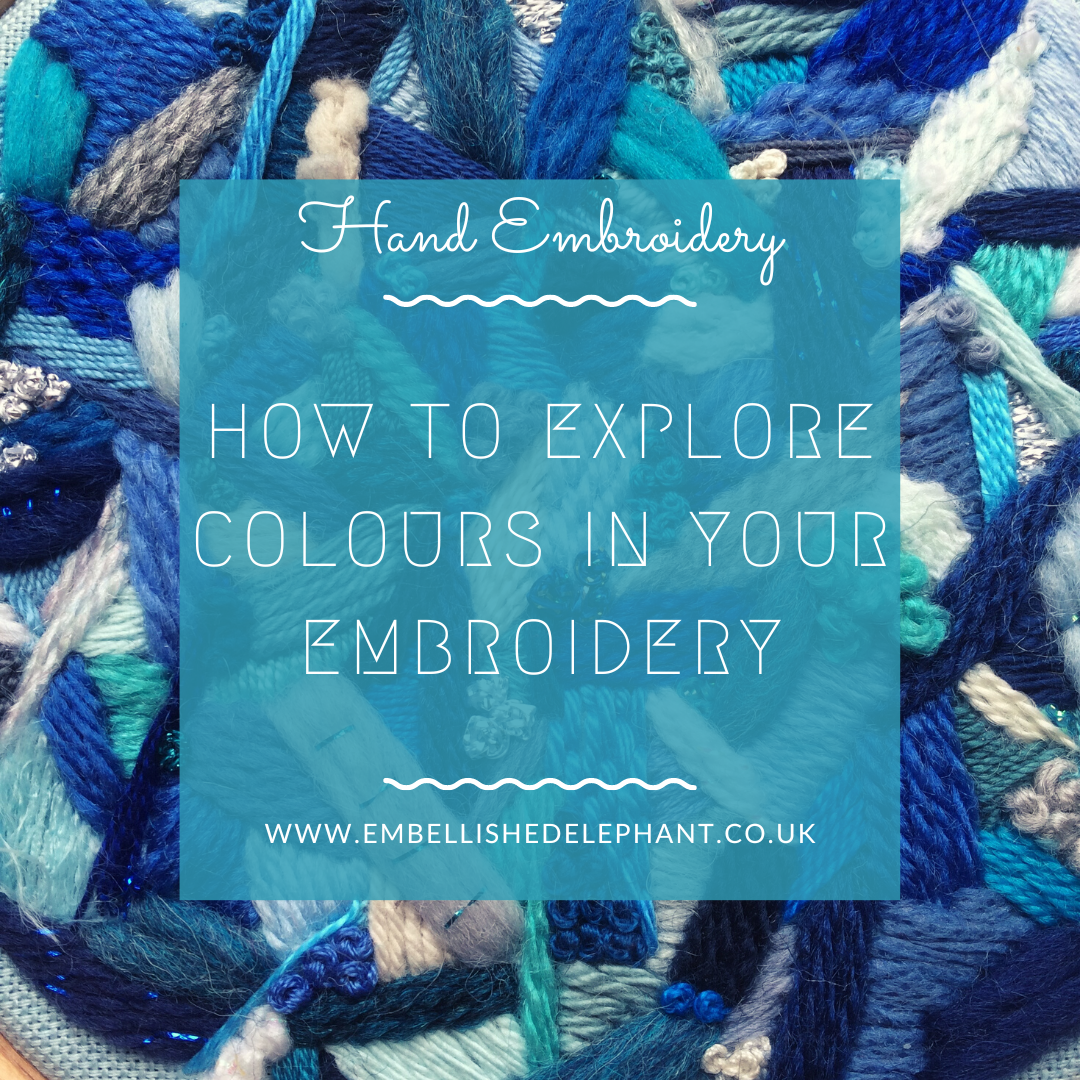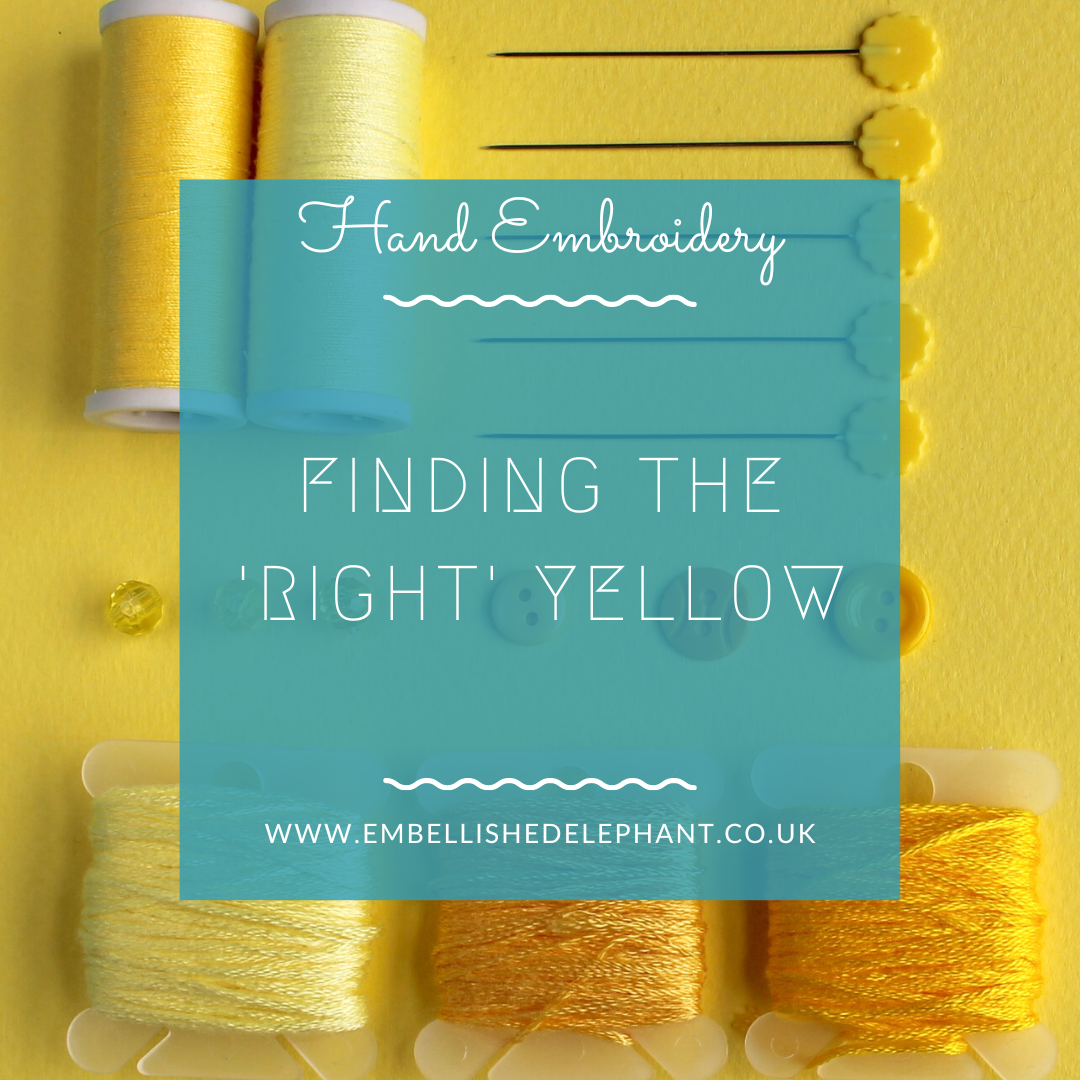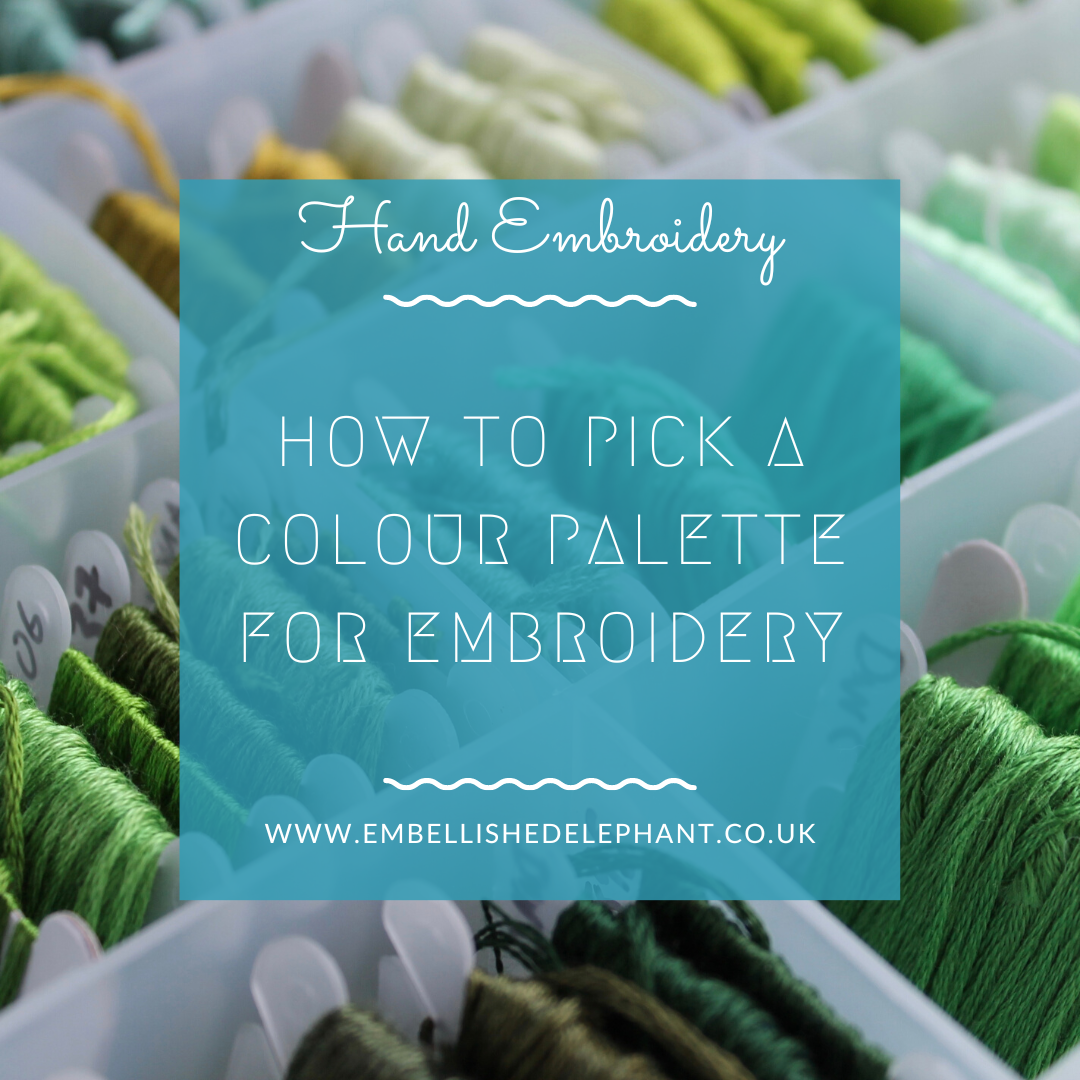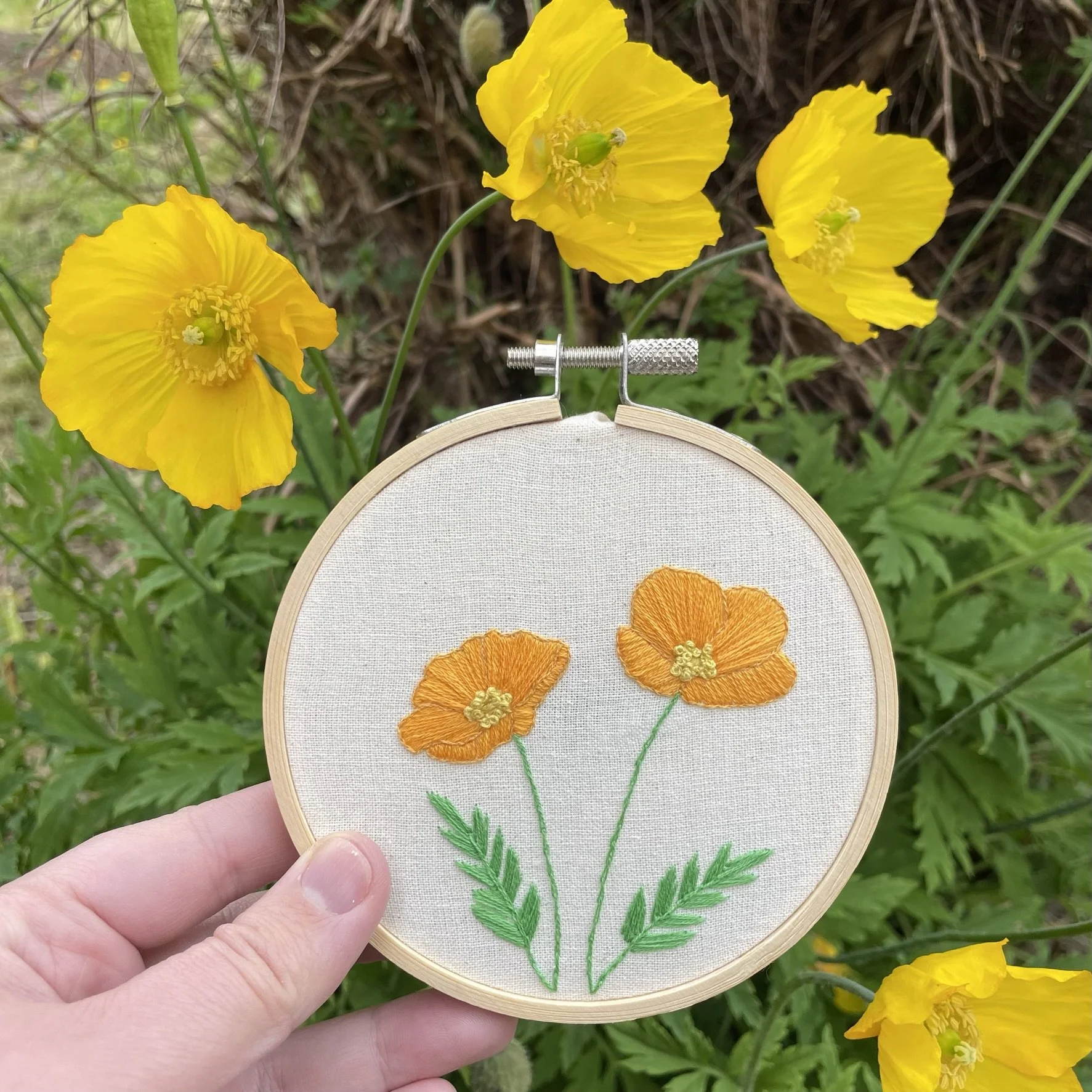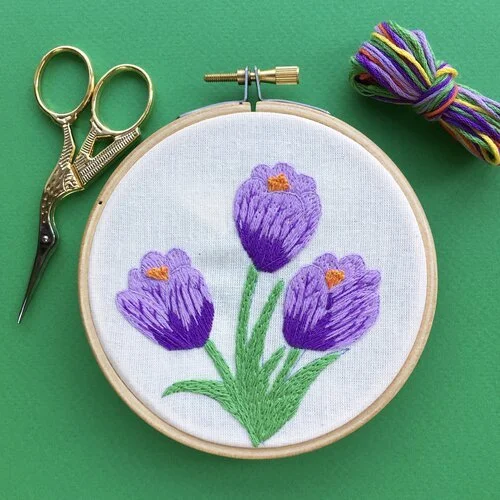My favourite colour is blue. I see subtleties in shades of blue that I just don’t see in other colours.My craft stash reflects this, I have more yarn, thread and beads in blue than almost any other colour. I know what blues go well with each other and what don’t. But I just don’t have that same sense with other colours.
Over the past few years as I’ve been creating designs for Embellished Elephant and also pieces for myself I’ve noticed some approaches that I’ve used that have helped me explore colour in a different way.
Set a challenge
I design and stitch a seasonal floral embroidery pattern that is released on my newsletter each month (Sign up here to get it delivered directly to your inbox). I am therefore working on subjects that are based on a range of different colours (imagine if I only released patterns of blue flowers!) This has meant that I’m working much more with shades of yellow, pink, purple and green and I’m starting to appreciate these colours, shades and learn how to combine them together.
Work intuitively
One of my favourite styles of embroidery when I want to stitch a personal project is intuitive embroidery. With this approach you pick out a palette of coloured thread and pick a colour almost at random and stitch where you feel is right. Working with a multicolour palette really teaches you things like complimentary colours that you could learn about in colour theory but is much more fun if you can experiment and practice for yourself. This approach also works with a monochrome palette as you can really start to hone in on what shades sit well with each other and which are more jarring. The picture above is a piece stitched in an intuitive style.
Stitch a range of designers
Different embroidery designers have different approaches to colour. Some favour bold and bright, others pastels. Some pick colours as close as possible to the subject of their embroidery and others will go off piste and stitch leaves in colours like blue or pink.
Stepping into the shoes of another embroidery artist gives you a sense of how they’ve put their colour palette together and why it works.
Enjoyed this blog post? I share embroidery tips and a free embroidery pattern in my monthly newsletter. Sign up here to receive the newsletter on the 1st of each the month.

